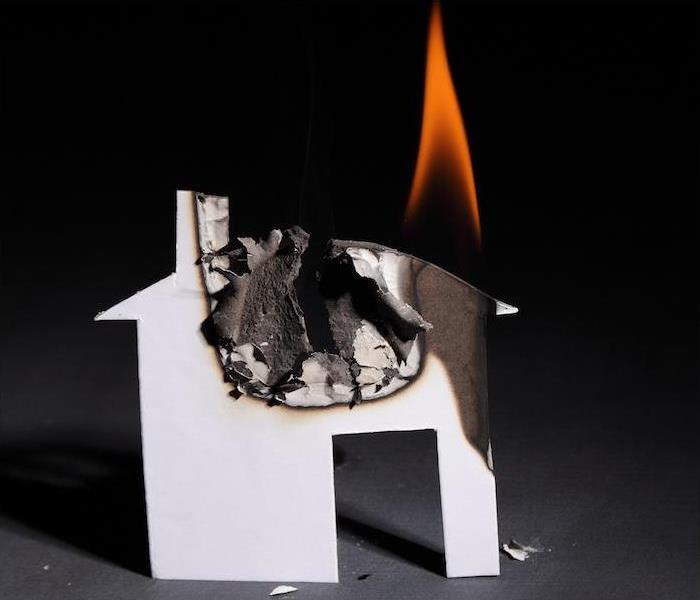The Shape of Every Fire | SERVPRO® of Clatsop, Columbia Counties
1/28/2022 (Permalink)
 If your home or business has any damage, SERVPRO of Clatsop, Columbia Counties is ready around the clock to help you recover.
If your home or business has any damage, SERVPRO of Clatsop, Columbia Counties is ready around the clock to help you recover.
When you think of fire, you probably think of flames dancing and devouring, morphing to outline the shape of whatever poor substance is engulfed. But it turns out every fire, regardless of its form, has the same shape—in a manner of speaking.
Meet the fire tetrahedron. This shape, effectively a pyramid made of four triangles, is used by scientists to portray the four elements which make up every fire.
These elements also teach us everything we need to know about how fires can be combatted. Let’s take a tour of the fire tetrahedron.
The 4 Things a Fire Needs to Live
Fuel. Every fire happens to something—in other words, fires don’t happen in a vacuum, neither literally nor figuratively. Each fire starts with a fuel source of either an organic or inorganic nature.
Heat. In order for a fire to break out, the fuel source in question has to reach a high enough heat to produce the combustion. This, of course, varies among different fuel source materials, but every material has its combustion level.
Oxygen. Fires use oxygen to further fuel their combustive exploits, and they leave behind messes of carbon dioxide to clean up and carbon monoxide to breathe.
Chemical Chain Reaction. The chain reaction is the most recent addition to the fire tetrahedron, after the scientific conclusion that all the preceding elements have to continuously happen together, over and over, for a fire to thrive. Now if you want a fire to stop, that’s another story, with the same actors.
The 4 Ways to Stop a Fire
Cool it. The sustained heat of the fuel source is crucial to a fire’s survival. Therefore the cooling of the fuel source and the restoration of a thermal balance will cause the fuel to cool faster than it can heat up, leading to the demise of the fire.
Smother it. Not to be crude, but anything that needs oxygen can be seriously hampered by a sustained period without oxygen—and fire is no different. Any covering that prevents a fire from breathing prevents it from living.
Starve it. When a fuel source becomes scarce or unavailable, there’s nothing left for a fire to burn. After all, the material has been charred or otherwise used up, and there’s nowhere else to spread, your fire is done.
Interrupt the chain reaction. As the chemical reaction is a crucial part of the fire, the disruption of the reaction causes the fire to stutter and fail. Certain gases and chemicals have been found to be rather adept at this, though some of them are not great for the environment.
If the fire tetrahedron makes a wreck of your home or business, we’re ready around the clock to help you recover. Contact SERVPRO anytime for fast, thorough cleanup and recovery after a fire.





 24/7 Emergency Service
24/7 Emergency Service